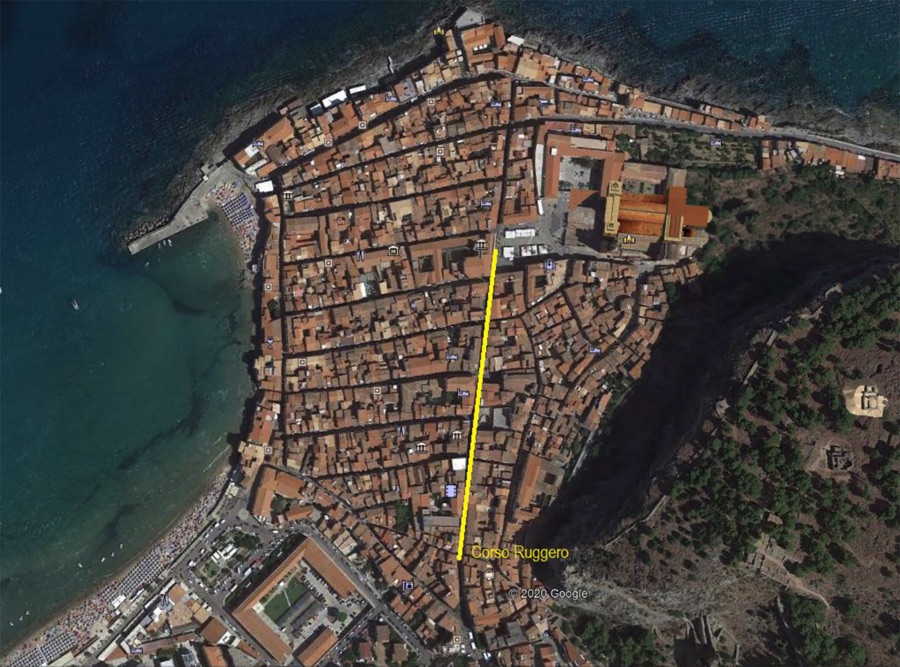The particular position of Cefalù, situated on the most important passes between the
Val di Mazara and the Val Demone
, as well as being a decisive transit area for the Madonie and Nebrodi valleys, became the basis on which the sovereign began the rebuilding of the city, which is almost halfway between Palermo and Messina. Roger II’s project of organic and unitary renovation took shape following the foundation of the Cathedral in 1131.
From an account by the Arab geographer
Edrisi
, dating back to the middle of the 12th century, the strategic, political and commercial importance of the city was accurately described as follows: “Gafludí, a city-like fortress, lies on the seashore, with its markets, baths and mills, situated in the same town, overlooking sweet and fresh water that rises up (from the rock), giving its inhabitants something to drink. The fortress of Cefalù (was built) on rocks, washed by the sea.” It has a beautiful harbour, where ships come from all over.
The country is very populated. A fortress overlooks it from the top of a steep mountain, very difficult to climb because of the high and steep coast”. The Norman sovereign made significant changes to the urban space, creating a new road layout, built over the previous Hellenistic-Roman era. The new design of via regia, today’s Corso Ruggero, was not left to chance, but gave life to geometric directions at right angles to the longitudinal axis of the cathedral. The order that distinguishes the comb-shaped street pattern that joins the bottom of the road contrasts, however, with the obvious tortuosity of the urban fabric still of Islamic matrix, located upstream of the same. In this heterogeneous palimpsest of actions, also dictated by a far-sighted desire for political consensus, numerous privileges granted to the Church were aimed at integrating the Latin population in a city still populated by Byzantine and Arab ethnic groups.
The new design of via regia, today’s Corso Ruggero, was not left to chance, but gave life to geometric directions at right angles to the longitudinal axis of the cathedral. The order that distinguishes the comb-shaped street pattern that joins the bottom of the road contrasts, however, with the obvious tortuosity of the urban fabric still of Islamic matrix, located upstream of the same. In this heterogeneous palimpsest of actions, also dictated by a far-sighted desire for political consensus, numerous privileges granted to the Church were aimed at integrating the Latin population in a city still populated by Byzantine and Arab ethnic groups.